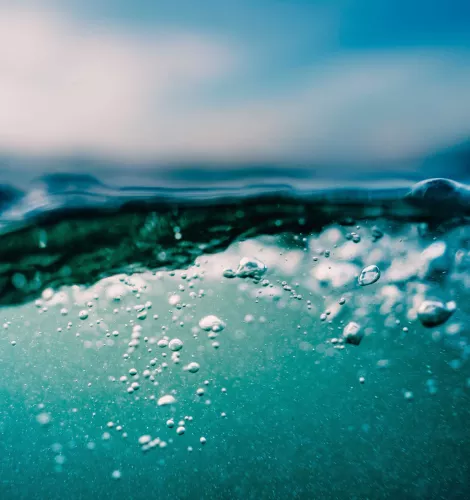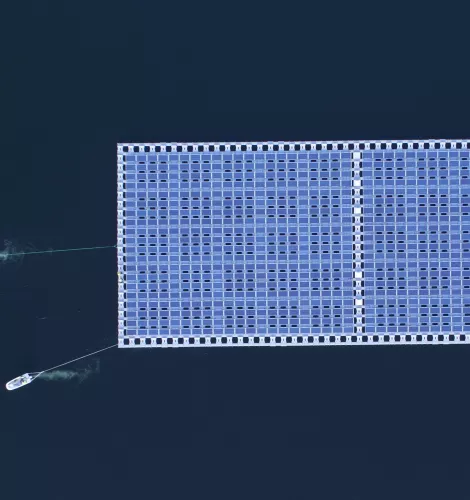Storing energy for when it is needed is not a new concept, but it's particularly important in an increasingly electrified world. Improving energy storage solutions ensures the flexibility of a power grid focused on renewable energies.
Storing energy is something all living creatures have always done. What we eat becomes physical and mental energy, which we store so that our body can do its everyday tasks. This is how André Botelho, Head of Energy Storage & Flexibility at EDP Inovação, explains the basic concept of energy storage. Applied to the electricity and energy sector, storage becomes a particularly relevant issue as more and more electricity comes from intermittent renewable sources, such as the sun or the wind, which creates difficulties when managing distribution networks.

"You can't control consumption yet, your control over electricity generation is decreasing, so you need something to do what our body does, something to store energy." André Botelho, EDP Inovação
You can either store energy for instant use - in batteries, for instance, which are always ready to release electric current and can be recharged - or in the form of production potential, which is the case of water stored in dams. Hydrogen and thermal energy - which can be obtained by using surplus renewable electricity, either for later direct use or further electricity generation - are also forms of storage. It is possible to apply the various existing grid-scale solutions, in a large format, or "behind the meter" solutions, to a particular consumption which may or may not include delivering energy to the distribution network.
According to Pablo Berruecos, the head of EDP Renováveis's new business unit in North America, which focuses on energy storage, it is important to evolve this field right away. Not only does it "postpone the need for energy production," it also helps us "identify the best moments to send energy back into the grid." This is a complex process with multiple variables, but it makes it possible to "balance the production and availability of electricity by combining not only those energy sources that are subject to weather conditions, but also storage units of that same energy, in a grid which in turn is subject to demand fluctuations."
Storage makes it possible to "identify the best moments to send energy back into the grid," says EDP Renováveis North America's Pablo Berruecos
Energy storage is also a crucial aspect of decarbonization, as it ensures the efficient management of distribution networks - with electricity coming from various production areas - while also helping repurpose fossil fuel-based facilities, such as thermal plants. According to André Botelho, carbon neutrality cannot be achieved "if we do not have these tools that provide flexibility." That is the keyword - flexibility; that is what makes it possible to manage different types of generation and consumption at any given moment.
There's more to storage than dams and batteries
Currently, about 95% of the energy that is stored to be transformed into electricity is provided by hydropower plants. However, the new needs of a society which is becoming more and more electrified, from homes to vehicles, and the intermittent use of renewable energies force us to invest in new solutions and technologies. According to André Botelho, there are many possible answers; some of them are already being used, others are still being researched. "There are many kinds of needs and multiple technologies, and this creates a matrix. This is a space at a boiling point." All these ways of storing energy "contribute something," he says, so "combining all these things in a way that makes sense is a very interesting challenge to contemplate."
Mechanical
Hydropower. Dams, in which a reservoir accumulates water, which at the time of electricity production is discharged and sent through generation turbines.
Hydropower with pumping. In periods of lower consumption, pumps bring water back into the reservoir, or carry it to a reservoir further up, where it will be ready to return to the turbines when demand increases.
Compressed air. Following the same energy use principle, surplus production is used for compressing air into a reservoir or well. When it is necessary to generate electricity, released air powers an electricity generator.
Flywheel.Kinetic energy obtained through a rotor that keeps spinning in a watertight compartment. It accumulates energy when it accelerates, and slows down when it is released.
Gravitic energy. It "simulates" hydropower production by means of weights, which can be suspended on a slope, in a sloping tunnel, or from a tower. The dropped weight activates the production of electricity.
Electrochemical
Rechargeable batteries. The most commonly used batteries are made of lithium-ion; they are used in small mobile phones, transport, and buildings. But before these, there were acid batteries - which are still present in combustion vehicles. Nickel-zinc batteries - which EDP NEW is testing with the LOLABAT project (link to batteries text) - are also an option.
Flow batteries. Similar to the fuel cells used in hydrogen vehicles, flow batteries produce energy by sending ion in a liquid state through a membrane between two tanks.
Super condenser. A type of battery that lasts much less than lithium-ion batteries, but charges much faster and takes more charges and discharges. Used in electronic devices such as power drills and camera flashes.
CHEMICAL
Power to gas.Transforming surplus electricity into gas, hydrogen or methane through water electrolysis. Green hydrogen is currently one of the major drivers of this method; it can then be combined with natural gas for industrial uses or be reconverted into electric energy for transport.
Power to liquid.Transforming electricity into liquid hydrogen, methanol or ammonia, which can then be used in synthetic fuels, industry or electricity production.
THERMAL
Sensitive heat.A solid or a liquid, like certain types of salt, can store energy when heated. When released, heat can be used to produce energy.
Latent heat.The same method, but it requires a change of state from solid to liquid or gas, by accumulating thermal energy.
Cryogenic.Surplus electricity is used to liquefy oxygen at very low temperatures. Upon returning to its normal state, it expands and makes a production turbine move.
Carnot battery.A possibility for repurposing thermal power plants. Instead of heating coal or gas to produce energy, surplus electricity is stored in the form of heat, to be reconverted into electricity at the power plant.
EDP leads storage universe on multiple fronts
energy storage
Storing energy for a better future
If renewable energy is one of the ways to achieve carbon neutrality, energy storage ensures its effectiveness. All so that solar and wind energy can continue to grow and so that the need for fossil fuels is ever less.







